Are you ready to plant your dream garden? Follow these easy steps to get started. First, decide what you want to grow in your garden and choose a location that gets enough sunlight. Then, plan your garden beds and prepare the soil for planting. Finally, decide whether to use seeds or transplants and consider using containers or raised beds.
Key Takeaways
- Decide what you want to grow and make sure it’s suitable for your area.
- Choose a location that gets enough sunlight and is easily accessible.
- Plan your garden beds and prepare the soil for planting.
- Consider using seeds or transplants and containers or raised beds.
Deciding What to Grow in Your Garden
Before you start planting, take some time to decide what you want to grow in your garden. It’s important to focus on fruits, vegetables, or herbs that your family enjoys the most. Consider your gardening zone, average frost dates, and talk to successful gardeners in your area to find out which crops grow well.
When deciding on what to grow, take into account the amount of sunlight your garden receives and the accessibility of the plants. For example, if your garden gets a lot of shade, focus on growing plants that thrive in those conditions, like lettuce or spinach. It’s also important to protect your garden from wildlife, like deer or rabbits, by using fencing or other barriers.
Plan your garden beds by considering the type, size, and layout that works best for the plants you intend to grow. You can maximize space by using vertical gardening techniques or containers. Container gardening is ideal for those with limited space or who want to move their plants indoors during colder weather.
Investing in basic garden tools is essential for any gardener. Some essential tools include a shovel, hoe, rake, and watering can. Make sure to invest in quality tools that are the proper size for your needs, as using tools that are too small or too large can cause injury.
Testing your soil is important to ensure it is healthy and suitable for planting. You can test your soil with a kit or by sending a sample to a lab. Based on the results, you can take steps to improve the soil quality, such as adding organic matter or using fertilizer. Consider alternative soil options like garden soil bags or composting at home.
Starting your garden with seeds or transplants is a matter of preference and gardening experience. Seeds offer a wider selection of plant varieties, but require more attention and care. Transplants are generally easier to handle and offer a head start on growing, but may limit your selection. Containers or raised beds can be a good option to create a suitable growing environment for your plants.
One of the most important tips for deciding what to grow in your garden is to not be afraid to experiment with new plants and techniques. Every season can be a learning experience and can help you grow as a gardener.
Choosing the Perfect Garden Location
The location of your garden plays a crucial role in its success, so choose wisely. When deciding on a location, consider what you would like to grow and focus on fruits, vegetables, or herbs that your family enjoys. It’s important to know your gardening zone and talk to successful gardeners in your area to determine which crops grow well.
One of the most important factors to consider when choosing a location for your garden is the amount of direct sunlight it will receive. Fruiting plants require at least five hours of direct sunlight per day, while greens, herbs, and root veggies can tolerate partial shade.
Accessibility is another important consideration. Choose a location that is easy to get to and work in. Be mindful of wind and frost pockets, as well as wildlife and pet damage when selecting a garden location.
When planning your garden beds, consider the type and size that will work best for your chosen location. You can opt to use raised beds or sunken beds, or even utilize vertical gardening techniques. If you have limited space, you can also consider using grow bags or containers.
Invest in basic garden tools that are the right size for you, as good tools will save time and effort. Consider testing your soil to understand its pH level, texture, and structure before planting to ensure optimal growing conditions.
Finally, it is important to choose plants that match your growing conditions and are suitable for your hardiness zone. Consider whether to start with seeds or transplants, keeping in mind that seeds are more affordable but less predictable. You can start a garden in pots or containers, or build raised beds depending on your preferences, space, and budget.
By following these tips, you can choose the perfect garden location and embark on a rewarding gardening journey. (Keyword: garden location, sunlight, accessibility, garden planning advice)
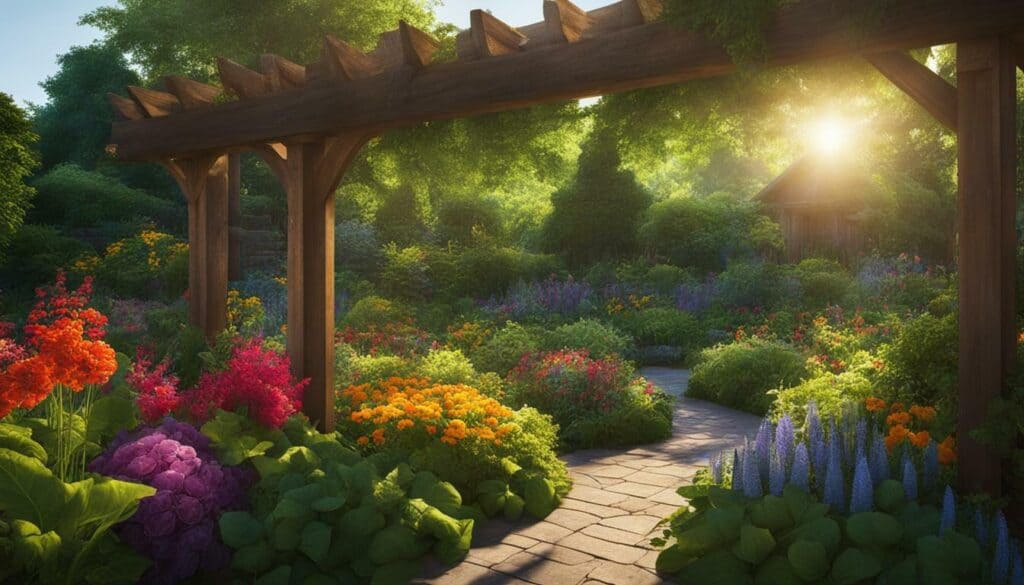
Planning Your Garden Beds
When planning your garden, it’s important to consider the type and size of your garden beds. Raised garden beds are a popular choice as they can improve soil drainage, increase growing space, and reduce the risk of soil compaction. Sunken beds can also be effective in areas with heavy rainfall or waterlogging.
When deciding on the size and shape of your garden beds, consider the amount of space you have available, the crops you want to grow, and how much time and effort you want to invest in maintenance. It’s recommended to start small and gradually expand as you become more experienced and confident.
Vertical gardening techniques such as trellising can also be used to maximize growing space and reduce the footprint of your garden beds. Containers are another option for small or limited areas, providing portability and flexibility.
When planning your planting techniques, consider companion planting to maximize yields and natural pest control. Rotate crops annually to prevent soil-borne diseases, and interplant with cover crops or nitrogen-fixing plants to improve soil health.
Investing in basic garden tools such as a shovel, rake, and hoe can reduce physical strain and increase efficiency. Test your soil to ensure it is healthy and suitable for planting. Soil tests can provide valuable information on pH levels, nutrient deficiencies, and potential contaminants.
By following these tips for planning and creating your garden beds, you can increase productivity and yield a bountiful harvest.
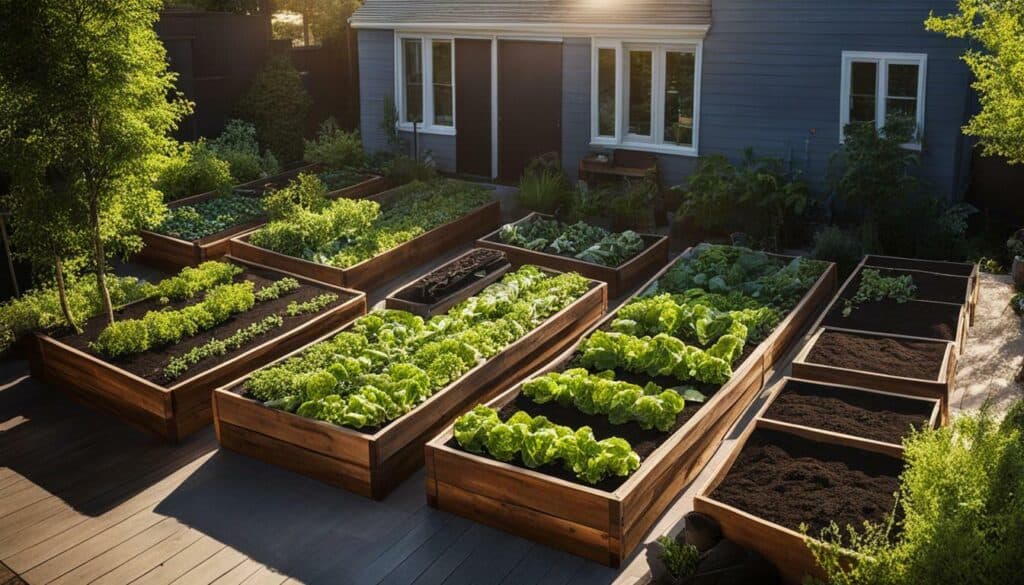
Essential Garden Tools to Invest In
To make your gardening experience smoother, investing in the right tools is essential. When starting a garden, there are a few basic tools that you should have on hand to make your life easier. These include a garden hoe, scuffle hoe, dirt rake, leaf rake, garden shovel, and hand tools like pruners and shears.
When choosing your gardening tools, it’s important to avoid buying cheap plastic tools that will break easily. Opt for high-quality metal tools that are the right size for you. Good tools will save you time and effort and ensure that your garden thrives.
Another crucial tool for your garden is a garden kneel pad. This will save your knees and make working on the ground more comfortable. Additionally, a hose for watering is a must-have. Consider getting a hose with a spray nozzle attachment to make watering more efficient.
In addition to tools, there are other factors to consider when planning your garden. Take into account the plants you want to grow and ensure they are suitable for your climate and soil. The location of your garden is also important, as it should be in a spot that gets enough sunlight and is easily accessible for watering and maintenance.
When planning your garden beds, consider the size and type that will work best for you. Raised beds are a popular option that can improve drainage and make gardening easier on your back. Additionally, testing your soil to determine its pH level and composition is crucial for successful gardening.
Depending on your space, you can choose to grow plants from seeds or transplants. Starting from transplants can be easier for beginners, while starting from seeds provides more variety and control over your garden. Lastly, consider using containers or raised beds for your garden, as they can be a great option for smaller spaces or areas with poor soil.

By following these tips and investing in the right tools, you’ll be well on your way to creating a thriving garden. Happy planting!
Understanding Your Soil
The health of your plants starts with healthy soil, so it’s important to understand and care for it. Before planting, test your soil to determine pH levels and understand its texture and structure. Soil testing kits can be found at your local gardening store or through online retailers.
Soil quality can be improved by adding compost, organic matter, or garden soil bags to amend the soil. Consider composting at home to reduce waste and create nutrient-rich soil for your garden. Understanding your gardening zone and frost dates can also help you plan and prepare your soil for successful growth.
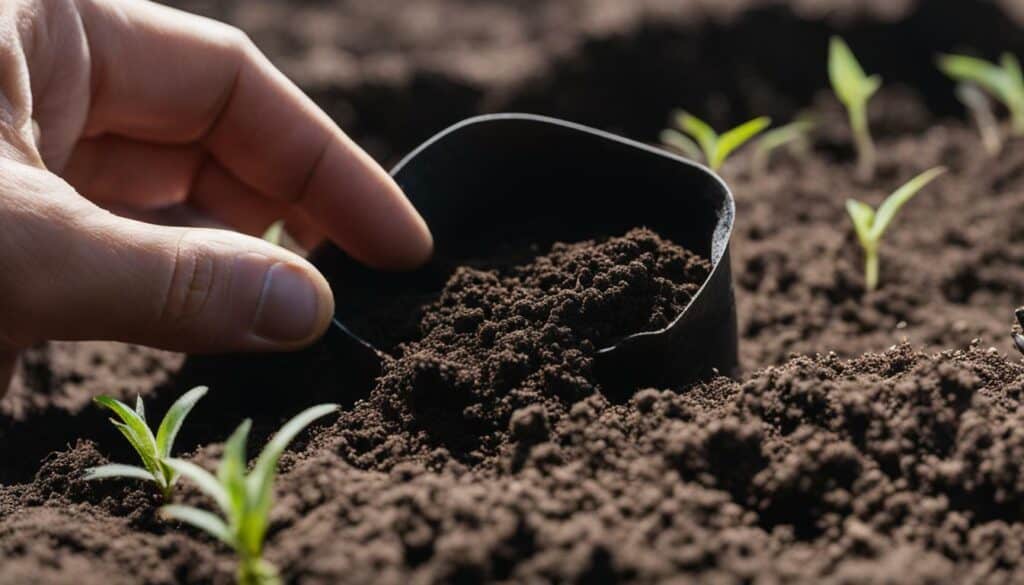
Gardening tips suggest that starting with healthy soil provides a strong foundation for your plants, minimizing the need for synthetic fertilizers or pesticides. If your soil quality is poor, consider utilizing raised beds or container gardening to control the growing environment.
When planting, take note of the recommended planting depth for your specific plants and ensure the soil is well-drained to prevent waterlogged roots. Regularly testing your soil and amending it accordingly can lead to healthy and bountiful garden harvests.
Choosing Plants for Your Growing Conditions
When selecting plants for your garden, it’s essential to consider their suitability for your growing conditions. The first step is to decide what you’d like to grow based on your family’s preferences and your gardening zone. Understanding your zone’s hardiness and frost dates can help you choose which plants will thrive in your garden.
Living in the United States, the USDA’s Plant Hardiness Zone Map is an excellent resource. It divides the country into specific zones based on how cold winters get in each region. To find your gardening zone, visit the USDA’s website and enter your zip code. This information will help you choose plants that are hardy enough to survive in your area.
Additionally, consider the amount of sunlight your garden receives when selecting plants. Some crops, such as tomatoes and peppers, require a lot of sun and heat to thrive. On the other hand, leafy greens and herbs can tolerate partial shade.
Wildlife, pet damage, and children’s play areas should also be taken into account when selecting the location for your garden. If you have a lot of deer or rabbits in your area, it may be best to plant crops that are less appealing to them. If you have pets or children who may play in the garden, be mindful of toxic plants.
It is also crucial to prepare your soil correctly before planting. Testing the soil’s pH level and structure will help you determine which plants will grow best in your garden. Soil texture and structure are essential factors that determine how well plants can penetrate the soil. Depending on your soil’s pH level, certain plants may do better than others, and adjustments can be made accordingly.
Knowing whether to start your garden from seeds or transplants is another important consideration. Seeds are more affordable, but they require more attention and may be less predictable. Transplants, on the other hand, are easier to manage and have a higher success rate.
Finally, deciding whether to plant in containers or raised beds depends on your preferences, space availability, and budget. Containers can be made from various materials, but it’s important to ensure they have proper drainage and avoid toxic or leaching materials. Building raised beds with suitable wood, such as cedar or redwood, is ideal for long-lasting structures.
By considering these factors, you can choose the right plants for your growing conditions and set up a successful garden.
Timing Your Planting
Timing your planting is crucial to ensure the health and success of your garden. Deciding what you want to grow is the first step in planning your garden. Choose fruits, vegetables, or herbs that your family enjoys and are suitable for your area’s climate. Determine your gardening zone and frost dates to know which crops thrive in your region and when to plant them.
Once you have determined what to grow, choose a location that receives adequate sunlight and is easily accessible for care. Consider potential challenges like wildlife or pet damage when selecting a spot. Plan your garden beds by using raised beds or planting in blocks to maximize growing space. Test your soil to ensure it is healthy and suitable for planting. Understanding your soil texture, structure, and pH level is essential to ensure optimal growing conditions.
Consider using seeds or transplants based on affordability and predictability. Starting from seeds can be cost-effective but requires more attention and care. Using transplants may provide more predictable results but can be more expensive.
Finally, decide whether to use containers or build raised beds depending on your space and budget. Containers are great for small spaces, and raised beds can help reduce weed growth and provide better soil drainage. Ultimately, the decision about planting method is up to you, but always remember to consider your family’s needs, as well as your gardening goals, space, and budget.

By following these simple planting season tips, you can set yourself up for a bountiful garden harvest and create a beautiful, thriving outdoor space that your family can enjoy for years to come.
Starting with Seeds or Transplants
When starting your garden, you have the option of using seeds or transplants, each with its own advantages. If you are new to gardening or prefer a more predictable outcome, starting with transplants could be the way to go. Transplants are already established young plants that have been started from seed and grown to a certain size before being sold. They offer a higher chance of success, are easier to care for, and can be more resistant to pests and diseases compared to starting with seeds.
On the other hand, starting with seeds can be a more affordable option, and it allows you to choose from a wider variety of plants. When selecting seeds, it is important to choose varieties that are suitable for your region and growing conditions. Consider your gardening zone and the average first and last frost dates to ensure success with your chosen plants. Some seeds may require special treatments like soaking or scarification before planting, so be sure to read the instructions carefully.
Another important factor to consider when starting a garden is the soil. Healthy soil is essential for plant growth and should be well-textured, have good structure, and a balanced pH level. Testing your soil or consulting with a local master gardener can help you determine its health and make any necessary adjustments. If you opt for starting with seeds, you can also consider starting them in containers indoors before transplanting them outdoors.
Ultimately, the decision to start with seeds or transplants will depend on your preferences, the specific plants you want to grow, and the conditions of your garden. With proper care and attention, starting a garden with either option can be a fun and fulfilling experience that allows you to connect with nature and enjoy the benefits of homegrown produce.
Creating Garden Containers or Raised Beds
Creating containers or raised beds is a great way to customize your garden to fit your needs and preferences. Whether you have limited space, poor soil quality, or just want to add some visual interest, containers and raised beds can help you make the most of your gardening experience. Here are some gardening tips to help you get started.
Garden Containers
Containers can be made from a variety of materials, including plastic, clay, or metal. The most important thing is to ensure that the container has drainage holes to prevent waterlogging. If you’re feeling creative, you can even make your own containers from repurposed materials such as old tires or wine barrels.
When choosing a container, think about the size and type of plant you want to grow. Small plants such as herbs can be grown in smaller containers, while larger plants like tomatoes or peppers will need larger containers. You can also consider vertical gardening to save space, using containers that stack or hang.
Remember to choose non-toxic materials for your containers, especially if you plan to grow edible plants.
Raised Beds
Raised beds are a great option if you have poor soil quality or want to make gardening easier on your back. They can also help you maximize growing space by allowing you to plant more densely.
When building raised beds, it’s important to choose a durable material that will not rot quickly. Cedar or redwood are popular choices because they are naturally insect and rot-resistant.
Consider the size and height of your raised beds based on what you are planting and your own physical abilities. Beds that are too wide may be difficult to reach the center without stepping on the soil, which can compact it and disrupt plant growth.
Gardening Tips for Containers and Raised Beds
- Choose high-quality soil or make your own compost to fill your containers or raised beds. Healthy soil is key to plant growth.
- Water your containers or raised beds regularly, as they may dry out more quickly than traditional garden beds.
- Consider companion planting to maximize space and deter pests.
- Rotate your crops each year to prevent soil-borne diseases and maintain soil health.
- Provide support for plants that need it, such as trellises or stakes.
- Harvest your crops regularly to encourage continued growth and prevent over-ripening.
By following these gardening tips, you can create garden containers or raised beds that will provide you with a bountiful harvest and a beautiful garden space.
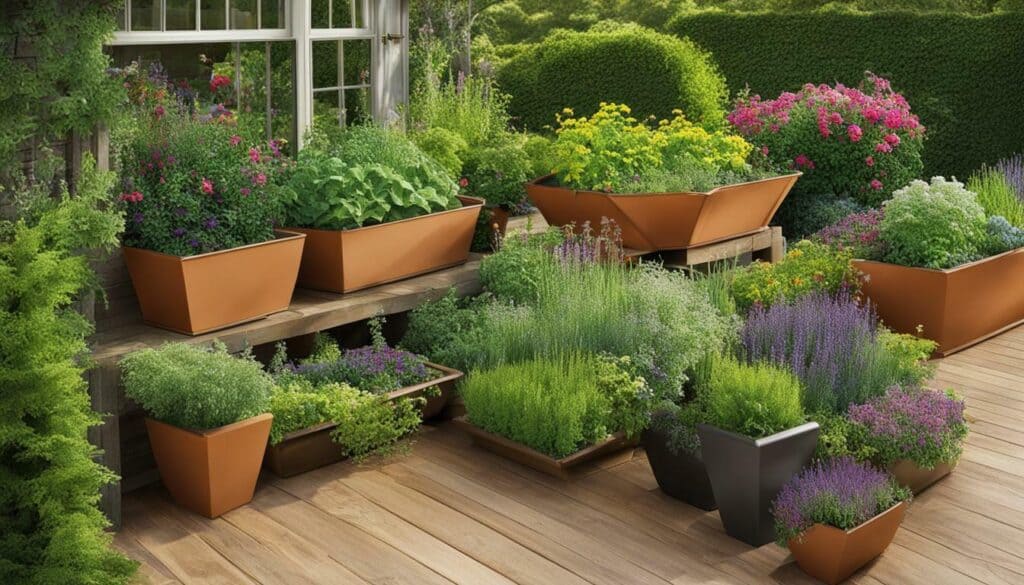
What Are Some Basic Garden Flowers That Are Easy to Grow for Beginners?
For beginners looking to create their own oasis garden, easy-to-grow garden flowers are a must. The beginner’s oasis garden flowers guide recommends starting with marigolds, zinnias, and sunflowers. These vibrant blooms can thrive with minimal care and satisfy any green thumb craving a colorful and low-maintenance garden.
Conclusion
Congratulations! You now have the knowledge and confidence to plant your garden and enjoy the fruits of your labor. Remember to choose plants that are suitable for your growing conditions and take the necessary steps to care for your soil. Whether you prefer to start your garden with seeds or transplants, the right environment is vital for your plants to grow.
Don’t forget to consider factors such as sunlight, heat tolerance, and hardiness zones when choosing your plants. A bountiful harvest awaits those who take the time and effort to nurture their garden.
Remember, gardening offers numerous health benefits, from reducing stress to providing fresh produce. So, get out there and connect with nature. You won’t regret it!
FAQ
Q: What should I grow in my garden?
A: Focus on growing fruits, vegetables, or herbs that your family enjoys the most.
Q: How do I choose the perfect location for my garden?
A: Choose a location that receives at least five hours of direct sunlight per day and consider factors like accessibility, wind areas, frost pockets, and potential damage from wildlife or pets.
Q: How should I plan my garden beds?
A: Consider the type and size of the beds and opt for raised beds or sunken beds. Plant your garden in blocks or beds of plants instead of single rows to maximize growing space.
Q: What are the essential garden tools to invest in?
A: Invest in tools like a garden hoe, scuffle hoe, dirt rake, leaf rake, garden shovel, hand tools, garden kneel pad, and a hose for watering. Ensure they are of good quality and the right size for you to reduce the risk of injury.
Q: How can I improve the quality of my soil?
A: Test your soil to understand its pH level and other chemical properties. Consider buying garden soil in bags, composting at home, or churning your soil to improve its quality.
Q: How do I choose plants for my growing conditions?
A: Consider the amount of sunlight, heat tolerance, and available space for each plant. Choose plants that are suitable for your growing conditions and hardiness zone.
Q: When should I plant my garden?
A: Learn your area’s average frost dates to avoid planting too early or too late in the season. This will help ensure your plants are not damaged by late-season cold or premature planting.
Q: Should I start with seeds or transplants?
A: Starting your garden from seeds can be affordable but less predictable, while using transplants is easier and more reliable. Consider your level of expertise and attention required for each type of plant.
Q: How can I create garden containers or raised beds?
A: Create containers using various objects with holes drilled in the bottom, or build raised beds using materials like wood, preferably cedar or redwood for durability.
Source Links
- https://commonsensehome.com/start-a-garden/
- https://miraclegro.com/en-us/gardening-101/10-top-gardening-tips-for-beginners.html
- https://www.npr.org/2020/04/17/837300800/this-is-a-good-time-to-start-a-garden-heres-how
- https://www.almanac.com/vegetable-gardening-for-beginners
- https://growinginthegarden.com/gardening-for-beginners-how-to-start-a-garden-in-8-simple-steps/
- https://blog.nationwide.com/family-life/travel-outdoors/tips-for-planting-garden/
- https://getbusygardening.com/what-vegetables-to-grow/
- https://growagoodlife.com/choosing-vegetables-grow/
- https://www.gardensthatmatter.com/choose-garden-location/
- https://www.almanac.com/where-put-vegetable-garden
- https://morningchores.com/vegetable-garden-location/
- https://www.almanac.com/video/how-lay-out-vegetable-garden
- https://savvygardening.com/4×8-raised-bed-vegetable-garden-layout/
- https://learn.eartheasy.com/articles/how-to-plan-a-vegetable-garden-for-beginners/
- https://www.gardendesign.com/how-to/tools.html
- https://www.almanac.com/gardening-tools-guide
- https://www.washingtonpost.com/home/2023/02/28/essential-garden-tools/
- https://www.uaex.uada.edu/yard-garden/vegetables/a-z/prepare.aspx
- https://gardenerspath.com/soil/soil-in-your-backyard/
- https://www.almanac.com/soil-preparation-how-do-you-prepare-garden-soil-planting
- https://www.provenwinners.com/learn/right-plant-right-place
- https://www.wikihow.life/Choose-Plants-for-a-Garden
- https://www.realhomes.com/advice/how-to-choose-plants-for-your-garden
- https://www.realsimple.com/home-organizing/gardening/outdoor/month-by-month-vegetable-gardening-guide
- https://www.familyhandyman.com/article/when-to-start-a-garden/
- https://www.homesandgardens.com/gardens/when-to-plant-vegetables
- https://byf.unl.edu/veggie-gardening-101-seeds-or-transplants
- https://www.thespruce.com/vegetable-garden-seeds-or-seedlings-1403412
- https://savvygardening.com/start-from-seed-or-buy/
- https://www.gardeners.com/how-to/raised-bed-basics/8565.html
- https://www.gardenary.com/blog/the-complete-guide-to-raised-beds
- https://savvygardening.com/preparing-a-raised-bed-garden/
- https://growingourown.wordpress.com/6-conclusion/
- https://content.ces.ncsu.edu/home-vegetable-gardening-a-quick-reference-guide
- https://extension.missouri.edu/publications/mg5

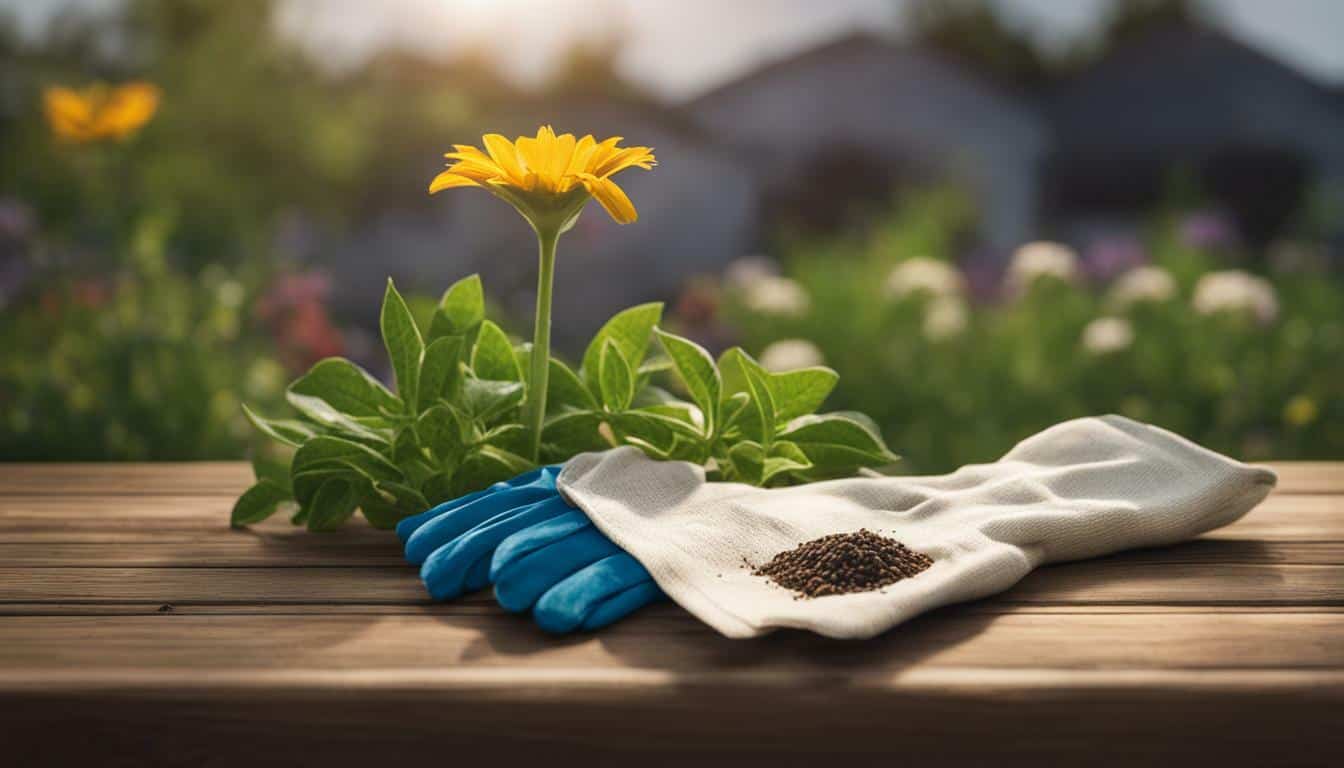



Leave a Reply